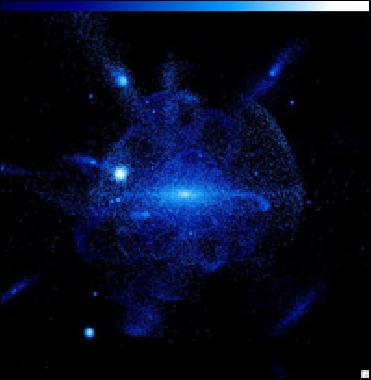
CHICHAGO (BNS): Another startling discovery of stars enveloping the Milky Way galaxy like a river delta criss-crossed by stellar streams large and small came to light at the ongoing international symposium, ‘The Sloan Digital Sky Survey: Asteroids to Cosmology’ in Chicago recently. According to the new data available from Sloan Digital Sky Survey (SDSS-II), smaller streams can be found throughout the stellar halo.
Bringing forward his study at the symposium, Kevin Schlaufman, graduate student at University of California, Santa Cruz, said that over the last three years, the SEGUE survey of SDSS-II had measured the motions of nearly a quarter million stars in selected areas of the sky. “A careful search for groups of stars at the same velocity turned up 14 distinct structures, 11 of them previously unknown,” he said.
The Californian student explaining the process of mapping said that by using SEGUE method, only a small fraction of the Galaxy had been mapped. “So, 14 streams in our data implies a huge number, when we extrapolate to the rest of the Milky Way. If each velocity structure were a separate stream, there would be close to 1000 in the inner 75,000 light years of the Galaxy. However, these structures could arise from a smaller number of streams that are seen many times in different places,” Schlaufman said.
Another researcher from the Columbian University Kathryn Johnston describing her theoretical models of Milky Way’s stellar halo said that they resembled like a ‘jumble of pasta’. Addressing the gathering at the symposium, Johnston explained how dwarf galaxies that pass close to the Milky Way can be stretched by gravitational tides into spaghetti-like strands, which wind around the Galaxy as stars trace out the same orbital paths at different rates.
To lend more credence to her theory, Johnston said that in the center of the Galaxy, the stellar strands crowd together and one can see a smooth mix of stars. She said that if one looked further away one can start to pick out individual strands, as well as features more akin to pasta shells that come from dwarfs that were on more elongated orbits. Negating the theory of Schlaufman, Johnston said that by looking at faint features, the Californian scientist may be finding some of the 'angel hair' that came from smaller dwarfs, or ones that were destroyed longer ago.
Heidi Newberg of Rensselaer Polytechnic Institute and her thesis student Nathan Cole have been trying to follow some of the larger strands as they weave across the sky. Expressing his viewpoint, Cole said, "It's a big challenge to piece things together, because the stream from one dwarf galaxy can wrap around the Galaxy and pass through streams of stars ripped from other dwarf galaxies.
Toward the constellation Virgo, where SDSS images revealed an excess of stars covering a huge area of sky, Newberg has found that there are at least two superposed structures, or possible more than three. Sharing her data at the symposium, Newberg said, “The SEGUE velocity measurements can separate systems that overlap in sky maps. Part of what we see toward Virgo is a tidal arm of the Sagittarius dwarf galaxy, whose main body lies on the opposite side of the Milky Way, but we don't know the origin of the other structures. There really aren't enough pasta varieties to describe all the structures we find."
In addition to stellar streams, astronomers searching the SDSS data have found 14 surviving dwarf companions of the Milky Way, including two new discoveries announced at the symposium by Gerard Gilmore of Cambridge University. These satellite galaxies are orbiting within the halo of invisible dark matter whose gravity holds the Milky Way itself together. Most of them are much fainter than the ten satellites known prior to the SDSS.
It is said that even the SDSS can only detect ultra-faint dwarfs if they are relatively nearby even if there could be many in Milky Way's dark halo, graduate students Sergey Koposov, Max Planck Institute for Astronomy in Heidelberg, Germany, and Eric Tollerud, University of California at Irvine said.














The Indian Air Force, in its flight trials evaluation report submitted before the Defence Ministry l..
view articleAn insight into the Medium Multi-Role Combat Aircraft competition...
view articleSky enthusiasts can now spot the International Space Station (ISS) commanded by Indian-American astr..
view article